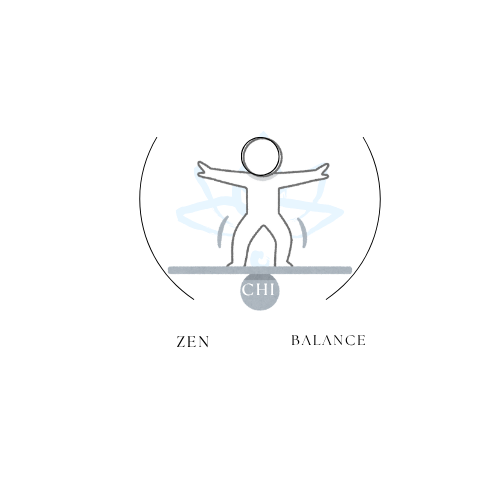
Mindfulness Training for Steady Focus and Calm Resilience
Aktie
Updated on: 2025-10-25
Table of Contents for the Mindfulness Guide
- Mindfulness Basics for Everyday Life
- Pros and Cons of Mindfulness and Nonjudgmental Awareness
-
Step-by-Step Guide: How to Practice Mindfulness
- Step 1: Notice the Breath for Present-Moment Awareness
- Step 2: Scan the Body with Nonjudgmental Awareness
- Step 3: Label Thoughts Gently
- Step 4: Practice Mindfulness Meditation for a Few Minutes
- Step 5: Mindfulness Exercises for Anxiety
- Step 6: How to Practice Mindfulness at Work
- Step 7: Keep a Mindfulness Journal
- Wrap-Up: Bringing Mindfulness into Daily Routines
- Mindfulness FAQ: Clear Answers to Common Questions
Mindfulness Basics for Everyday Life
Mindfulness is the gentle skill of paying attention to what is happening right now with kindness and curiosity. In simple terms, it means resting your attention in the present and noticing thoughts, feelings, and sensations with nonjudgmental awareness. Many readers ask, “What is mindfulness and how do I practice it?” The short answer is that mindfulness can be learned through small, steady moments of present-moment awareness—like feeling a breath or noticing your feet on the ground—repeated throughout the day.
Because mindfulness is practical, you can explore it in daily life. It can be formal, such as mindfulness meditation where you sit quietly and observe your experience, or informal, like taking three slow breaths before opening your email. Programs such as MBSR (Mindfulness-Based Stress Reduction) offer a structured way to learn these skills in a group setting. Yet you do not need a program to begin. A few minutes of mindful breathing or a short body scan can help you feel more settled and attentive without asking you to change anything about your experience.
If you would like a helpful place to start, you can browse gentle mindfulness ideas at mindfulness resources. Many people appreciate brief practices, especially on busy days, so this guide will focus on short, approachable steps you can try anywhere—at home, outdoors, or at work.
Pros and Cons of Mindfulness and Nonjudgmental Awareness
- Pros: Accessible and flexible. Mindfulness does not require special equipment. You can practice a few breaths at your desk or notice sounds while you walk. This accessibility makes it easy to begin and return whenever you wish.
- Pros: Encourages present-moment awareness. By noticing what is here right now, you may develop steadier attention and a kinder relationship with your inner experience.
- Pros: Supports nonjudgmental awareness. Observing thoughts and feelings without labeling them as “good” or “bad” can soften reactivity and promote thoughtful responses.
- Pros: Works with daily routines. You can bring mindfulness to cooking, commuting, or meetings, so it blends with real life rather than competing with it.
- Cons: Attention may wander. It is normal for the mind to drift. This is part of the practice, not a failure. Gentle redirection helps.
- Cons: Starting can feel unfamiliar. Slowing down and noticing sensations may feel new. Small steps and brief practices can make it more comfortable.
- Cons: Expectations can get in the way. Seeking specific outcomes may add pressure. Mindfulness invites a patient, open attitude instead.
Step-by-Step Guide: How to Practice Mindfulness
Step 1: Notice the Breath for Present-Moment Awareness
Choose a comfortable posture and let your attention rest on one breath. Feel the air moving in and out, the rise and fall, or the sensation at the nostrils. The aim is simple present-moment awareness. If your mind drifts, kindly note “thinking” and return to one next breath. Even a minute can be meaningful.
Step 2: Scan the Body with Nonjudgmental Awareness
Close your eyes or lower your gaze. Move attention gently from the top of the head to the toes. Notice areas of ease, areas of tension, warmth, or coolness. The key is nonjudgmental awareness: you do not need to change anything. You are simply noticing what is here with patience and care.
Step 3: Label Thoughts Gently
When thoughts arise, name them softly—“planning,” “remembering,” or “worrying”—and return to the breath or body. This light labeling can clarify what is happening without getting tangled in the story. It is a respectful way to relate to your mind.
Step 4: Practice Mindfulness Meditation for a Few Minutes
Set a timer for two to five minutes. Sit comfortably and rest attention on the breath or a simple anchor, like sounds. If you prefer support, explore brief guided audios to help you settle. Keep the posture natural and the attitude kind. Over time, you may lengthen your practice, though even short sessions are worthwhile.
Step 5: Mindfulness Exercises for Anxiety
When you feel unsettled, try a grounding practice. Name five things you can see, four things you can touch, three things you can hear, two things you can smell, and one thing you can taste. Then take one slow breath. These simple mindfulness exercises for anxiety can help you connect with the present without pushing feelings away.
Step 6: How to Practice Mindfulness at Work
Workplaces can be busy. You might add a one-breath pause before meetings, feel your feet on the floor while typing, or read an email twice—first to notice your reaction, second to craft a thoughtful reply. Short transitions, like three mindful breaths between tasks, can smooth the day. For ideas that fit your role, you might review concise workplace tips and adapt them gently.
Step 7: Keep a Mindfulness Journal
After a practice, write a few lines: What did you notice? What supported attention? What felt difficult? A journal builds awareness of patterns and encourages consistency. Keep it brief so it is sustainable.
Wrap-Up: Bringing Mindfulness into Daily Routines
Mindfulness is a steady, compassionate way to meet everyday life. With present-moment awareness and nonjudgmental awareness, you can notice what is happening, respond with care, and return to what matters. Whether you sit for a few minutes of mindfulness meditation, follow a structured course like MBSR, or weave several mindful pauses into your workday, small steps add up.
There is no single “right” way to practice. You are invited to approach each step gently, make it your own, and move at a pace that feels respectful. If you wish to explore further, you can learn more at your convenience and build a routine that suits your day.
Mindfulness FAQ: Clear Answers to Common Questions
What is mindfulness and how do I practice it?
Mindfulness is paying attention to the present moment with a kind, curious attitude. You can practice by choosing a simple anchor—breath, sound, or body sensations—and returning to it whenever the mind wanders. Short, frequent moments are often easier to maintain than long sessions. You can practice in everyday activities, such as taking a mindful sip of water or pausing for one breath before speaking.
What are the benefits of mindfulness?
Many people find that mindfulness supports steadier attention, clearer decision-making, and a calmer approach to daily stressors. It can help you notice thoughts and emotions without getting swept away, which may make it easier to respond thoughtfully. Because mindfulness blends with ordinary routines, it can also encourage small, sustainable habits that support well-being over time.
How is mindfulness meditation different from MBSR?
Mindfulness meditation is a simple practice you can do on your own—sitting, walking, or noticing the body—often for a few minutes at a time. MBSR (Mindfulness-Based Stress Reduction) is a structured educational program that teaches mindfulness skills over several weeks. If you enjoy self-guided practice, you can continue at your own pace. If you prefer a guided curriculum, MBSR offers a more formal path.
How can I practice mindfulness at work?
Consider brief pauses that fit the flow of your day: one breath before calls, a five-second posture reset after sending a message, or a mindful walk to refill water. You might also try silent minutes at the start of team meetings to gather attention. Small, respectful adjustments can support focus without disrupting your schedule.

I'm a passionate curator at Zen Chi Balance, dedicated to spreading calm, harmony, and mindful living through faith-inspired lifestyle products. I help craft meaningful experiences for our global community of mindful shoppers.
The content provided is for informational and inspirational purposes only. It is intended to encourage personal growth, mindfulness, and balance in daily life. Zen Chi Balance does not provide medical, legal, or professional advice. For specific concerns or guidance, please consult a qualified professional. Visit us at www.zenchibalance.com for more inspiration and resources.
